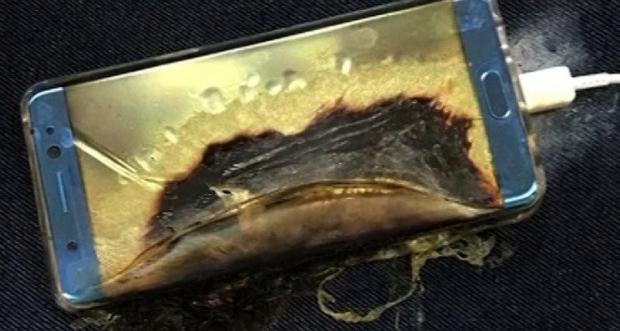Although it's been almost three months since the first Galaxy Note 7 recall, Samsung hasn't found the cause of the battery explosions that ultimately forced the company to permanently discontinue the sale and manufacturing of the flagship.
The South Korean company promised to announce the results of the investigations by the end of the year, so Samsung still has a couple of weeks to keep its promise.
However, it looks like we might already have an answer that seems very well documented, so Samsung's official announcement might come too late … again.
Instrumental, a third-party contractor that helps hardware companies find and fix issues caused by workmanship, part quality, process, and design, has just published the results of its own investigation regarding the Galaxy Note 7 battery explosions.
According to them, this was caused by the aggressive design of the phone itself, which didn't allow Samsung to offer replaceable batteries rather than recall all the Galaxy Note 7 units. Instrumental discovered that the design of the phone can compress the battery even during normal operation.
Apparently, Samsung engineers “designed out all of the margin in the thickness of the battery, which is the direction where you get the most capacity gain for each unit of volume. But, the battery also sits within a CNC-machined pocket, a costly choice likely made to protect it from being poked by other internal components.”
Even though Samsung tried to balance the risks of an aggressive manufacturing process to maximize capacity of the battery, while attempting to protect it internally, it appears that their solution failed.
Since battery testing can take up to one year in some cases, during which thousands of batteries need to be tested in order to get important results, Samsung did not have enough time to do a proper testing of the newest versions of the batteries.
Obviously, packing a smaller battery inside the Galaxy Note 7 could have solved the issue, but then the phone would have offered less battery life than the predecessor (Galaxy Note 5), as well as Apple's iPhone 7 Plus.
It appears that Samsung took a risk and wanted to provide a bigger battery in a smaller case, and the results were disastrous.
Sometimes innovation requires taking risks, but proper testing is always necessary, especially when you know that your products will get into the hands of millions of people, and Samsung failed on both fronts.

 14 DAY TRIAL //
14 DAY TRIAL // 

